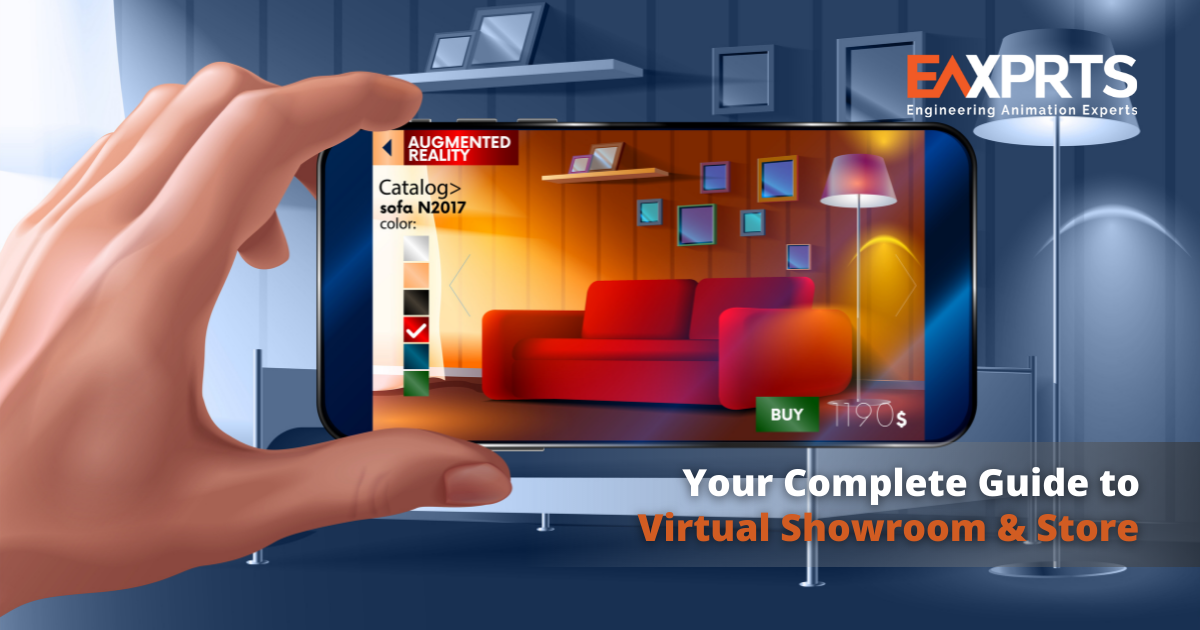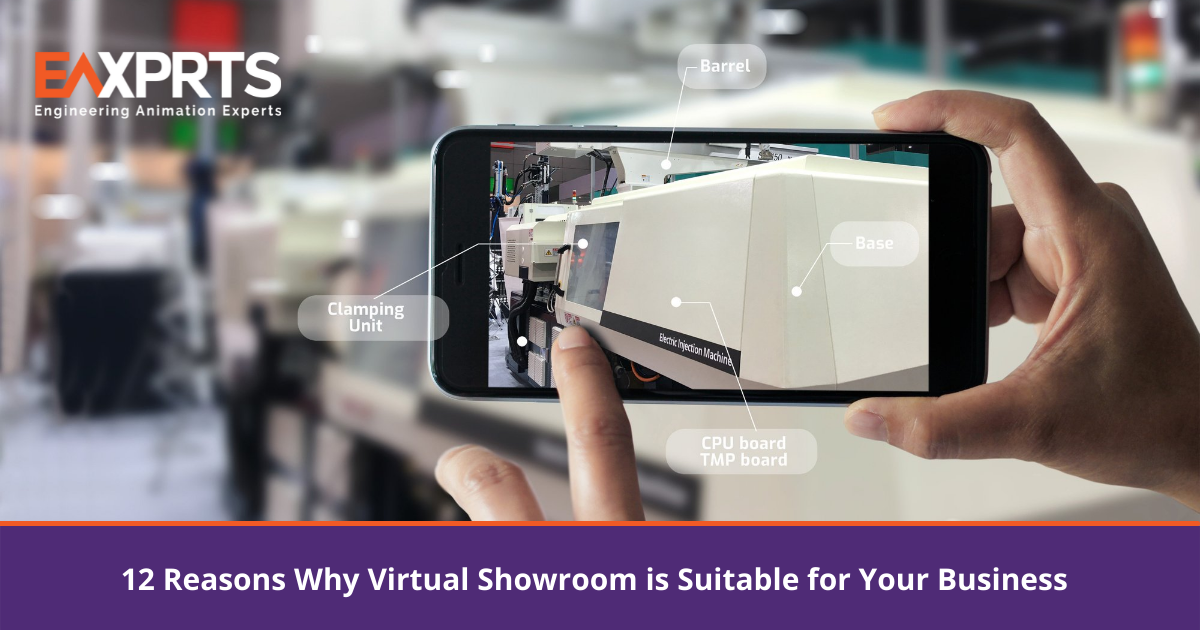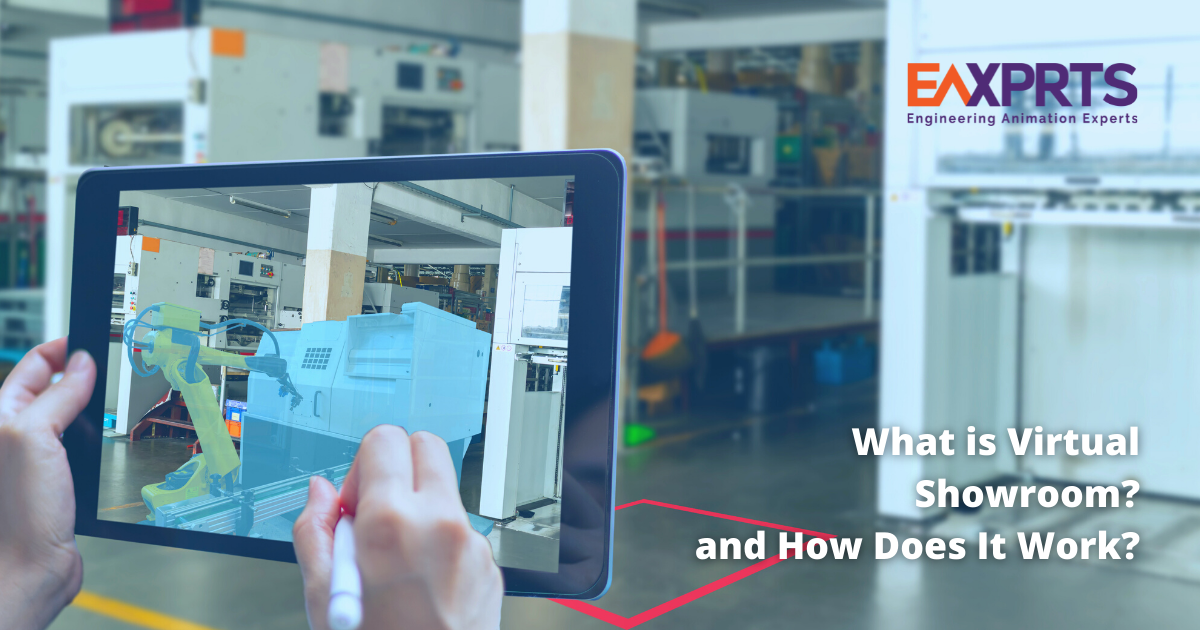
Your Complete Guide to Virtual Showroom or Store
November 5, 2020
12 Reasons Why Virtual Showroom is Suitable for Your Business
November 5, 2020A store or showroom is a place customer visit to buy stuff or products they need, ranging from electronic gadgets, industrial products, cosmetics or household goods – any product for that matter. A virtual showroom is a digital replica of the real thing, created with the use of graphics, 3D animations and immersive reality, where customers can ‘visit’ and check the products virtually before placing an order which is fulfilled in real world. With the new normal of post pandemic era, more and more people are turning to virtual shopping. So how does a virtual showroom work?
What is Virtual Showroom?
The virtual showroom goes far beyond a catalogue or digital presence in the form of a website, which is mostly static. A virtual showroom is a dynamic, interactive space with the ambience of a real store. It allows the visitors to ‘tour’ the place and interact with 3D images of products, turn them around at all angles, to have a look from all sides. These products could be anything ranging from electronic gadgets to industrial machines. One can do many things in a virtual showroom besides checking a product – check the specifications, compare it with a competing model and also see it operate, run it and watch the virtual demo, check peer reviews, download product brochures or catalogues, etc.
Technologies Implemented
While there are several digital tools available to create the virtual showroom with the right ambience, immersive technology is best suited for the purpose. Available in several versions like XR, AR, MR, etc., immersive reality facilitates a 360° view from any spot. Depending upon the technology used, the virtual store experience ranges from checking all objects in 3D to actually being part of it by the walkthrough experience.
- Extended Reality (XR)
It is an all-embracing term that covers all types of immersive technologies available today and in future. These include Augmented Reality (AR), Virtual Reality (VR), and Mixed Reality (MR). So extended reality is an experience that blends all three – AR, VR and MR – with some experts even figuring out the exact proportions in the mix at 36%, 38%, and 26% respectively. This blend of immersive technologies makes the virtual store more exciting with more data combined with the visual experience, creating an imaginary world interlinked with real objects and people, creating a world within a world.
- Augmented Reality (AR)
AR is a very popular choice of technology for virtual showrooms, and actually just extends or augments the reality digitally. Unlike virtual reality or VR where objects exist only in digital space, in AR, information and objects are overlaid or placed in the real world, in this case the store which actually exists, and information about the objects – images, text or animations – accessed through smartphones, tablets or laptops/PCs. Many popular brands use AR allowing visitors to see if their product will fit into the space available in their homes. To give an example that everyone can relate to, it is like the popular filters like snapchat that place glasses or hats on the head in photos.
- Mixed Reality (MR)
As the term suggests, combines the features of VR and AR, and hence it is also called hybrid reality. In MR, digital and real-world objects co-exist and can interact with one another. So that makes MR more immersive and interactive than AR on the one hand, but is still not fully in the purely digital domain like VR, disconnected with the reality around. In reality, the MR experience spans a spectrum that starts with closer resemblance to AR and then moves towards the VR experience, growing by degrees, till it has more resemblance with VR, but still rooted to the real world. For a virtual store, mixed reality offers a better experience than augmented reality, allowing more interactions between real world and virtual objects.
How Does It Work?
So, having seen the technology, how does it work? What are the essential elements for a virtual showroom to become successful? It is important to remember that a virtual store is not created out of vacuum but is a digital extension of a real store that people relate to, with the convenience of online purchase. So this experience must be interesting and engaging, as research indicates over 50% shoppers abandon the shopping cart midway, disappointed with the experience. So while the choice of technologies is important, even more important is to get an experienced agency to execute the concept to make it appealing to a wider audience.
Changing the Dynamics of Customer Engagement
Virtual showrooms are changing the dynamics of customer engagement, and immersive technologies offer a lot of options to do so. Providing a delightful visual experience and easy navigation should be right at the top of the wish list, with making all the information easily available coming next. The customer may need help so a virtual assistant must be available all the time. 3D animations and modelling play a huge role in making these experiences realistic. The checking out is equally important with the payment gateways offering all the options of digital transactions with safety embedded. Professional expertise helps in getting these things right.
Conclusion
For businesses that are engaged in selling, a virtual showroom is no longer an option. Already a hit with the young generation, the new normal has turned many of the older generation towards online under the new norm, the lockdown leaving them with little option. For companies, staying ahead of the intense competition means getting the equation right, as the technology is widely available and is no longer the preserve of a chosen few. However, getting the right blend and expertise is important.
To know more, connect with EAXPRTS! Reach us on sales@eaxprts.com



